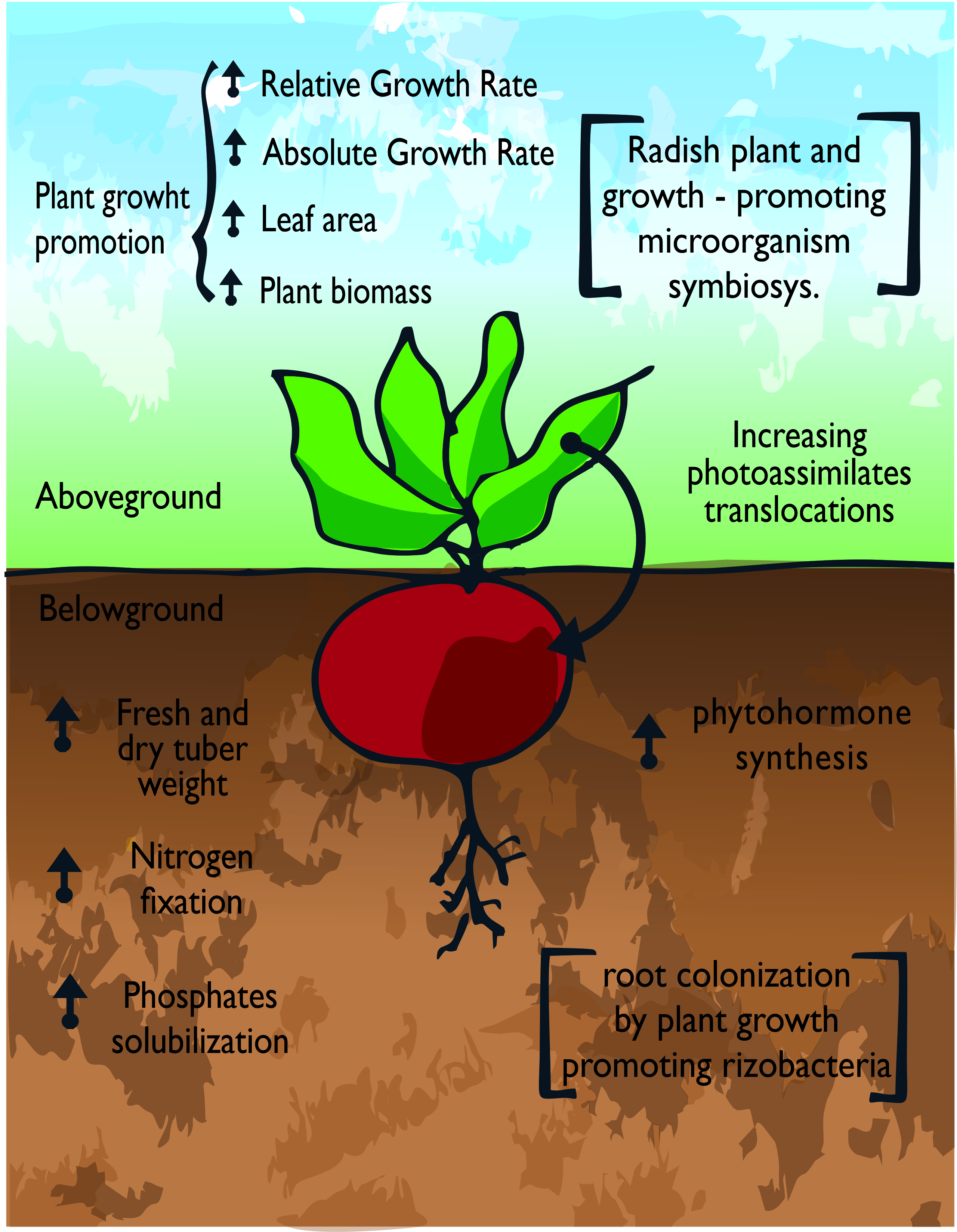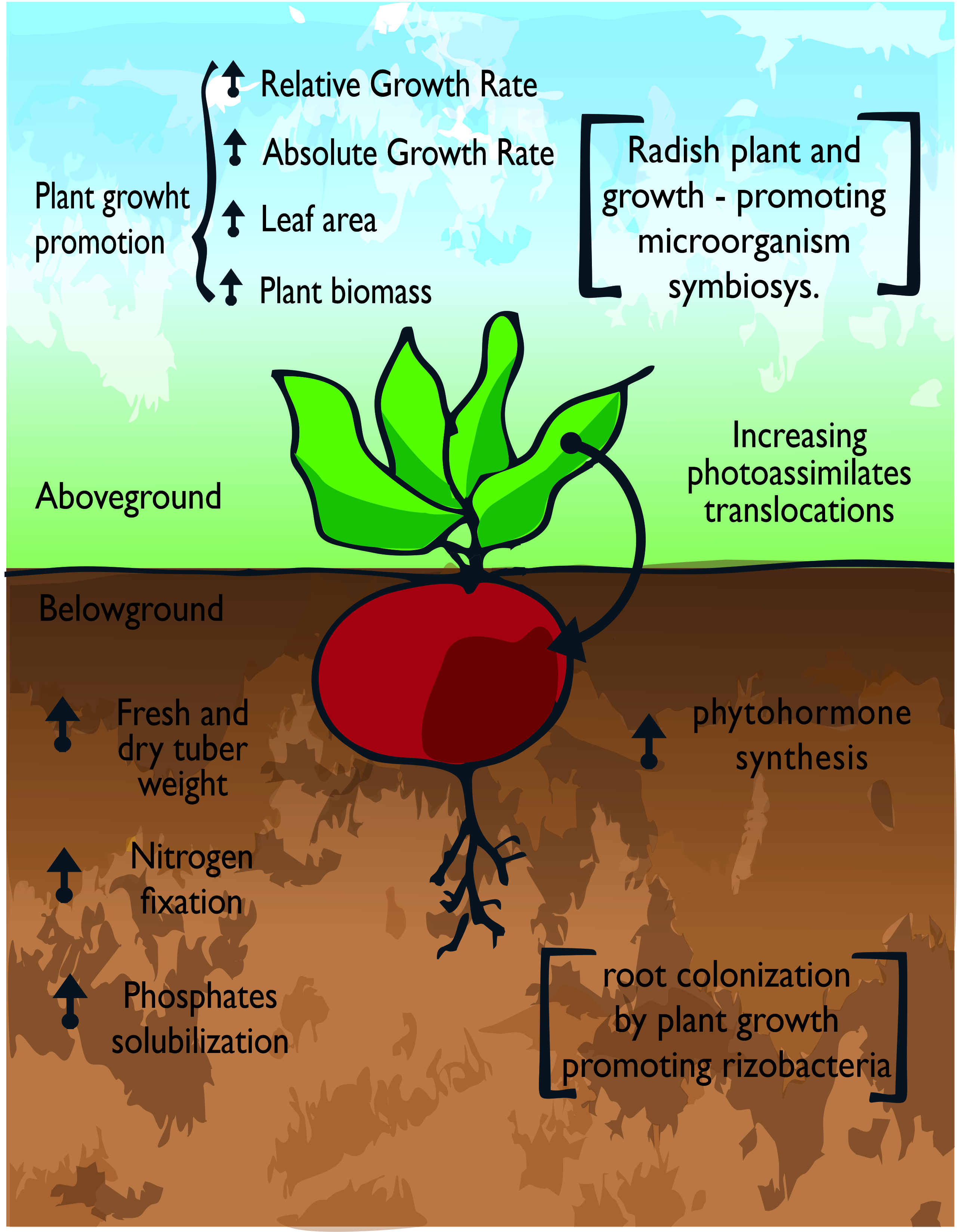Leaf growth and biomass accumulation in radish inoculated with rhizosphere microorganisms
Leaf growth and biomass accumulation in radish
Keywords:
Raphanus sativus L, hongos rizosféricos y tasa de crecimiento relativa, tasa de crecimiento relativa de bacterias, tasa de asimilación neta, MéxicoAbstract

Seeds of Raphanus sativus L. var. Champion were inoculated with commercial strains of rhizospheric fungi+bacteria. A completely randomized experiment was designed with four treatments: Chromobacterium violaceum+Acinetobacter calcoaceticus (BiofosfoBuap®, T1), Azospirillum brasilense (AzoFer), Glomus intraradices (MicorrizaFer), and uninoculated control. Each treatment had 20 replicates. The objective was to evaluate the effect of the different treatments on leaf growth, taproot length and dry weight, dry weight of leaves and tubers, and fresh tuber weight. Net assimilation rate (NAR), absolute growth rate (AGR), and relative growth rate (RGR) were calculated. Thirty three days after sowing (das), plants inoculated with C. violaceum+A. calcoaceticus had 52.67% more leaf area than the control, and 42 das they had 72.30% more leaf area. Thirty three das, treatments with C. violaceum+A. calcoaceticus and A. brasilense had 49.66% and 45.52% more dry leaf weight than the control. Fresh weight of tubers for the same two treatments was 65.03% and 63.11% higher than the control 33 das, respectively, and 80.70% and 74.56% higher 42 das. Co-inoculation with C. violaceum+A. calcoaceticus and inoculation with A. brasilense alone promoted growth of radish tubers as a consequence of increased leaf area and biomass as well as an increase in net assimilation rate.
Highlights
- The effect of rhizosphere bacteria and fungi on the leaf area of radish plants depends more on the leaves size than on the leaves number produced by the plant.
- The better growth observed in plants inoculated with C. violaceum + A. calcoaceticus and A. brasilense might depend on the greater plant hormone synthesis.
- The effects of C. violaceum + A. calcoaceticus on plant growth are better than a single microorganism inoculation and such effects depend on the enhanced co-inoculation.
- Inoculating plants with C. violaceum + A. calcoaceticus promotes the tuber biomass increase over the taproot growth.
- Inoculation with C. violaceum + A. calcoaceticus induces transfer of photosynthates from above ground part of the plant to the tuber in order to produce biomass.
- Inoculation with C. violaceum + A. calcoaceticus favored accumulation of biomass in leaves and tubers, resulting in total plant biomass production, although not taproot length.
Downloads

Downloads
Published
How to Cite
Issue
Section
License
Aquellos autores/as que tengan publicaciones con esta revista, aceptan las Políticas Editoriales.










.jpg)




